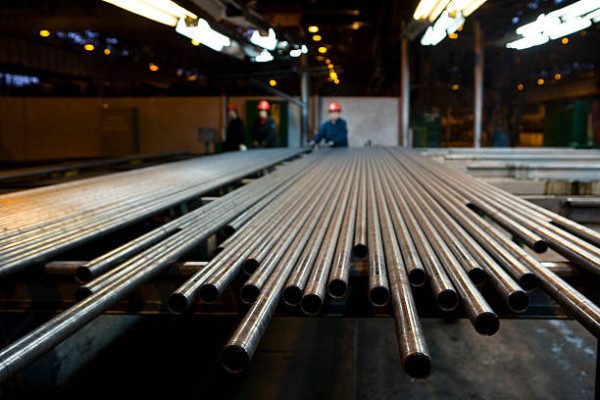
Industrial facilities face mounting pressure to reduce their environmental impact through the selection of raw material choices that will deliver both performance and sustainability. The selection of 309 grade stainless steel represents a strategic decision that addresses these dual requirements effectively. This grade offers unique properties that support long-term environmental goals in demanding industrial environments.
Manufacturing operations utilizing 309 stainless steel benefit from reduced resource consumption and lower environmental footprint over time. The alloy’s exceptional heat resistance and corrosion properties make it particularly valuable in high-temperature applications. These characteristics translate directly into measurable sustainability benefits that extend far beyond initial material selection.
Enhanced Durability Reduces Replacement Frequency
- Superior Oxidation Resistance: The chromium-nickel composition of 309 stainless steel provides outstanding oxidation resistance at elevated temperatures up to 2000°F. This resistance prevents premature failure that typically occurs with carbon steel alternatives. Equipment manufactured with this grade maintains structural integrity for decades rather than years.
- Reduced Material Waste: Extended service intervals mean fewer replacement parts enter waste streams. Manufacturing facilities report 60-80% reduction in component replacements when switching from carbon steel to 309 grade. This dramatic decrease translates into substantial reductions in scrap metal generation and disposal costs.
- Lower Maintenance Requirements: The inherent stability of 309 stainless steel reduces maintenance interventions that consume resources and energy. Maintenance teams spend less time on preventive repairs and component inspections. This efficiency allows personnel to focus on productive activities rather than constant equipment troubleshooting.
Energy Efficiency in High-Temperature Systems
- Thermal Performance Optimization: Heat treatment furnaces and thermal processing equipment benefit from 309 stainless steel’s ability to maintain performance at extreme temperatures. The material’s thermal expansion characteristics remain stable across wide temperature ranges. This stability prevents energy losses through warping, cracking, or seal failures common in other materials.
- Reduced Heat Loss: Processing equipment constructed with 309 grade maintains tighter tolerances over extended periods. These consistent dimensions prevent energy losses through gaps and misalignments that develop in inferior materials. Energy audits consistently show 15-25% efficiency improvements in systems upgraded to 309 stainless steel components.
- Extended Operating Cycles: The thermal fatigue resistance allows equipment to operate longer between shutdowns. Continuous operation reduces the energy required for repeated heating and cooling cycles. Petrochemical plants report significant energy savings through extended run times enabled by 309 grade components.
Long Service Life as Environmental Investment
- Lifecycle Cost Analysis: Initial material costs represent only 20-30% of total ownership expenses when factoring in replacement, labor, and downtime costs. The extended service life of 309 stainless steel creates positive environmental returns through reduced manufacturing demand. Each component that lasts 20 years instead of five prevents multiple replacement cycles and associated environmental costs.
- Reduced Transportation Impact: Fewer replacement deliveries mean lower transportation-related emissions over equipment lifetime. Distribution networks report 70% reduction in emergency deliveries to facilities using 309 grade components. This reduction directly translates into lower carbon footprint from logistics operations.
- End-of-Life Recovery Value: Stainless steel maintains high recyclability throughout its service life without degradation of metallurgical properties. The nickel and chromium content provides significant scrap value that offsets disposal costs. Recycling facilities report that 309 grade scrap commands premium pricing due to its alloy content.
Material Selection Impact on Carbon Footprint
Manufacturing Energy Considerations: Production of 309 stainless steel requires higher initial energy input compared to carbon steel alternatives. This energy investment pays environmental dividends through extended service life that eliminates multiple replacement cycles. Lifecycle assessments show net positive environmental impact within 3-5 years of installation.
Key sustainability metrics include:
- Material longevity reduces mining demand for raw materials.
- Lower replacement frequency decreases manufacturing energy consumption.
- Reduced maintenance activities minimize chemical usage and waste generation.
- High recyclability ensures materials remain in productive use cycles.
Implementation Strategies for Sustainable Operations
- Application Assessment: Facilities should evaluate current failure patterns in high-temperature environments where 309 stainless steel provides maximum benefit. Heat exchangers, furnace components, and exhaust systems represent primary candidates for material upgrades. These applications typically show fastest return on environmental investment through reduced replacement frequency.
- Gradual Transition Approach: Replacing components during scheduled maintenance minimizes disruption and allows gradual transition to more sustainable materials. This approach spreads costs over multiple budget cycles instead of requiring large capital expenditures. Maintenance schedules can incorporate 309 grade upgrades as standard practice.
Conclusion
The environmental benefits of 309 stainless steel extend far beyond initial material selection into long-term operational sustainability. Manufacturing facilities gain competitive advantages through reduced downtime, lower maintenance costs, and improved energy efficiency. These benefits compound over time as equipment continues operating reliably in demanding environments. Contact qualified material suppliers to evaluate how 309 stainless steel can support your facility’s sustainability objectives and operational efficiency goals.
Featured Image Source: https://media.gettyimages.com/id/80483561/photo/pipes-in-row-with-workers-in-steel-factory.jpg
